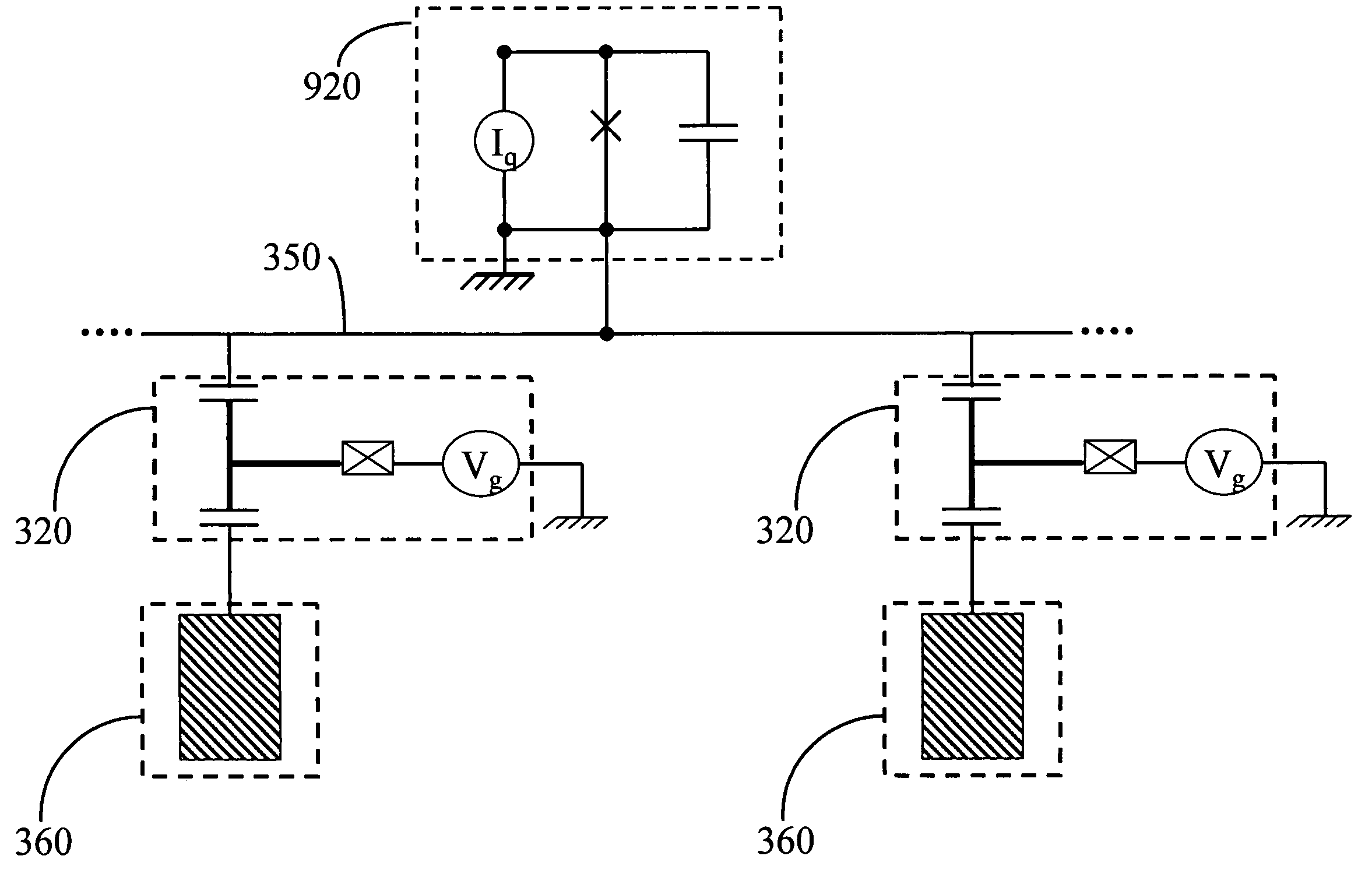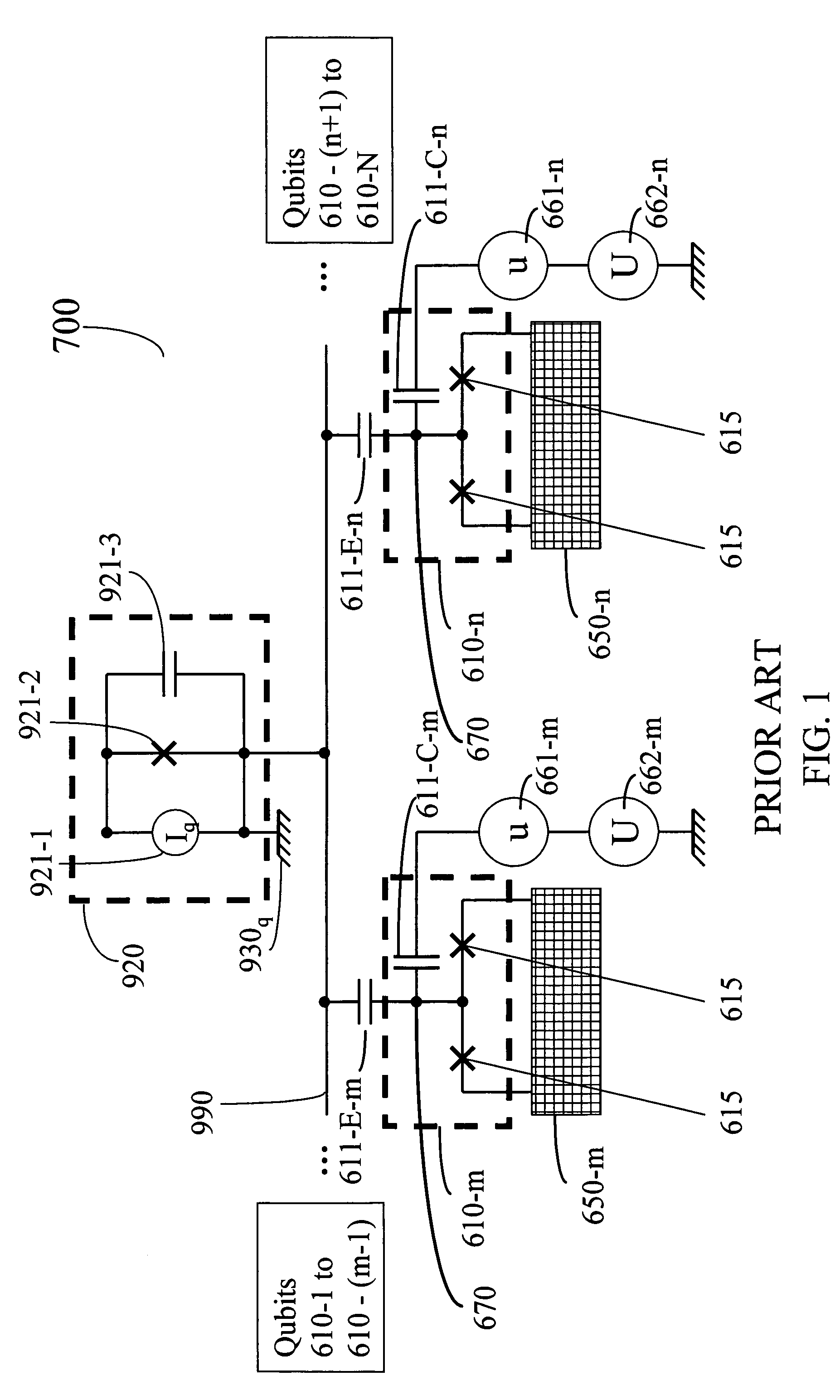Bus architecture for quantum processing
- Summary
- Abstract
- Description
- Claims
- Application Information
AI Technical Summary
Benefits of technology
Problems solved by technology
Method used
Image
Examples
Embodiment Construction
[0067]In accordance with the present invention, a scalable superconducting bus architecture for quantum processing comprises a plurality of qubits, where all or a portion of the plurality of qubits are controllably coupled to the bus. The size of the superconducting bus is limited only by its effective capacitance and the coherence length of the material used to make the bus. This novel architecture provides three advantages over the prior art. First, the effective-capacitance of the superconducting bus does not significantly depend on the number of qubits that are coupled to the bus. Thus, the number of qubits that can be coupled with the bus in the present invention is greater than that found in prior art systems. Second, there is no limitation to the energy level spacing spectrum of the qubits as is the case for the resonant controlled qubit system (RCQS) described in Section 2.4 above, because the qubits can be controllably uncoupled from the superconducting bus in a reversible,...
PUM
 Login to View More
Login to View More Abstract
Description
Claims
Application Information
 Login to View More
Login to View More - R&D
- Intellectual Property
- Life Sciences
- Materials
- Tech Scout
- Unparalleled Data Quality
- Higher Quality Content
- 60% Fewer Hallucinations
Browse by: Latest US Patents, China's latest patents, Technical Efficacy Thesaurus, Application Domain, Technology Topic, Popular Technical Reports.
© 2025 PatSnap. All rights reserved.Legal|Privacy policy|Modern Slavery Act Transparency Statement|Sitemap|About US| Contact US: help@patsnap.com



